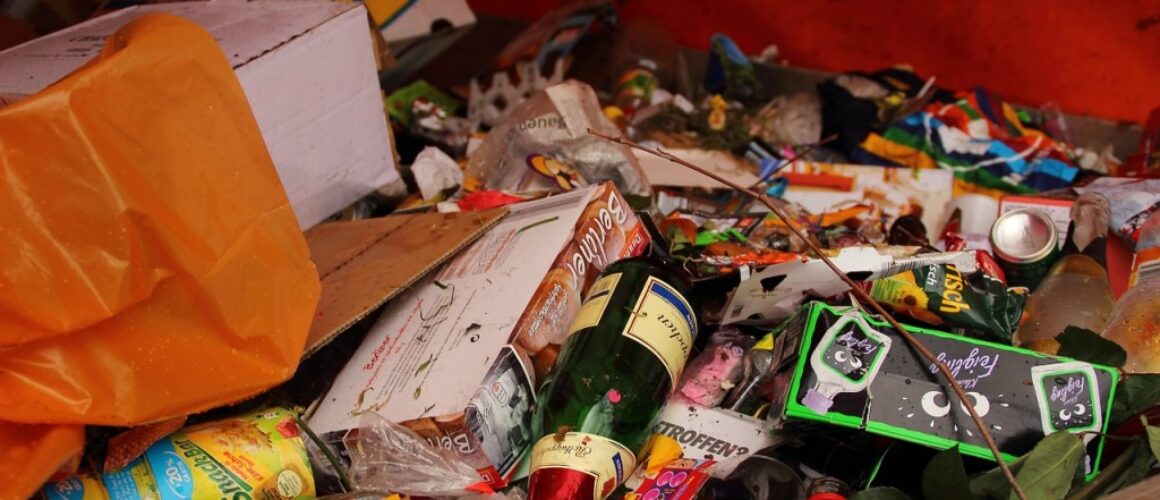Food Waste and the Myth of Monsanto Feeding the World
One of the most compelling promises that the biotech industry makes to justify the need for their products (genetically engineered crops and portfolio of chemicals needed to grow them) are that these ingredients are needed to feed the world.
Who can argue with that?
But according to Business Week, it turns out that “after millennia when the biggest food-related threat to humanity was the risk of having too little, the 21st century is one where the fear is having too much”.
It’s not just a domestic problem here in the U.S.. It’s a global one.
In the U.S., we waste and toss out almost 40% of our food, racking up $165 billion in losses each year.
Let’s step back and think about this for a minute, not just from the comfort of our homes here in the United States, but as a global issue.
How could that food be put to better use? And do genetically engineered crops impact this issue?
The chemical industry is busy manufacturing demand for their products by claiming that we need them – their genetically engineered seeds and the portfolio of pesticides, herbicides and fertilizers needed to grow them – to feed the world. It’s their job and a strong marketing strategy.
But are they using scare tactics to get us to believe that we need their genetically engineered, chemically dependent products in order to feed the world. Are we really facing mass starvation without them?
Most of these genetically engineered crops are grown to be fed to livestock. Some goes into ethanol and ends up in our cars. But has it contributed to the global obesity epidemic and food waste?
It turns out that just might be the case.
According to Business Week, “the issue isn’t so much that we can’t grow enough. Rather, existing food supplies are so poorly distributed that those hundreds of millions have too little for their own health, while 2 billion-plus have too much.” On top of that, a third of food is wasted worldwide, spoiled and thrown out before it even reaches consumers.
We are wasting enough food every day here in America to feed the hungry. And while much focus has been on the obesity epidemic, it is becoming increasingly hard to ignore the fact that with advertisements and food access available 24/7, we’ve got more food than we know what to do with.
According to both the USDA and United Nations, 30-40% of food is wasted. MSNBC just reported that “Food Waste is a Massive Problem.”
Nearly one-third of the fruit, vegetables, grains, meat, and packaged foods produced across the globe gets tossed out every year.
Americans throw away an average of 20 pounds of food each month — costing them each between $28 and $43.
One of the most insightful disclosures of just how bad this food waste and excess of commodity crops has gotten is documented in the movie, Dive! The Film, a film made with Jeremy Seifert and Josh Kunau, that highlights exactly what goes into dumpsters in America. And it is shocking what we throw away.
This 45-minute documentary follows Seifert and his friends as they explore the alleys and backstreets of America’s grocery stores in search of good food tossed away because of overly cautious expiration dates. These guys don’t mess around. They suit right up in their bathing suits and dive right in…to America’s dumpsters, and turn up some of the most amazing information.
Americans throw away 96 billion pounds of food every year, or 27 percent of the total amount of available food. That’s 3,000 pounds of food a second.
But it’s not just us tossing those PB&J crusts out, the main line of food waste tends to be coming out the back end of the grocery stores. And the film shows that a frightening amount ends up being tossed by grocery stores before it can be purchased by consumers.
Now that’s good news for the food industry, as it creates a constant state of demand for their products.
But what if we were to figure out a better business model, designed to deliver all of the food we need without wasting over a quarter of it? What if our taxpayer dollars were used to build a distribution model to get this food to people who need it, like the 1 in 4 American children at-risk for hunger, rather than on farm subsidies which are arguably contributing to this mounting waste?
We have an opportunity to actually build a better food system, one that creates less waste and more nutrient-dense foods. Wouldn’t that be in the best interest in the health of our families, our corporations, our economy and our country?
In the meantime, what can consumers do?
- Mine your fridge
- Use your freezer
- Get creative with leftovers
- Compost
- Take smaller portions
This isn’t just an American issue. Food waste is a global problem. If you are interested in learning more, please visit: http://divethefilm.com/
